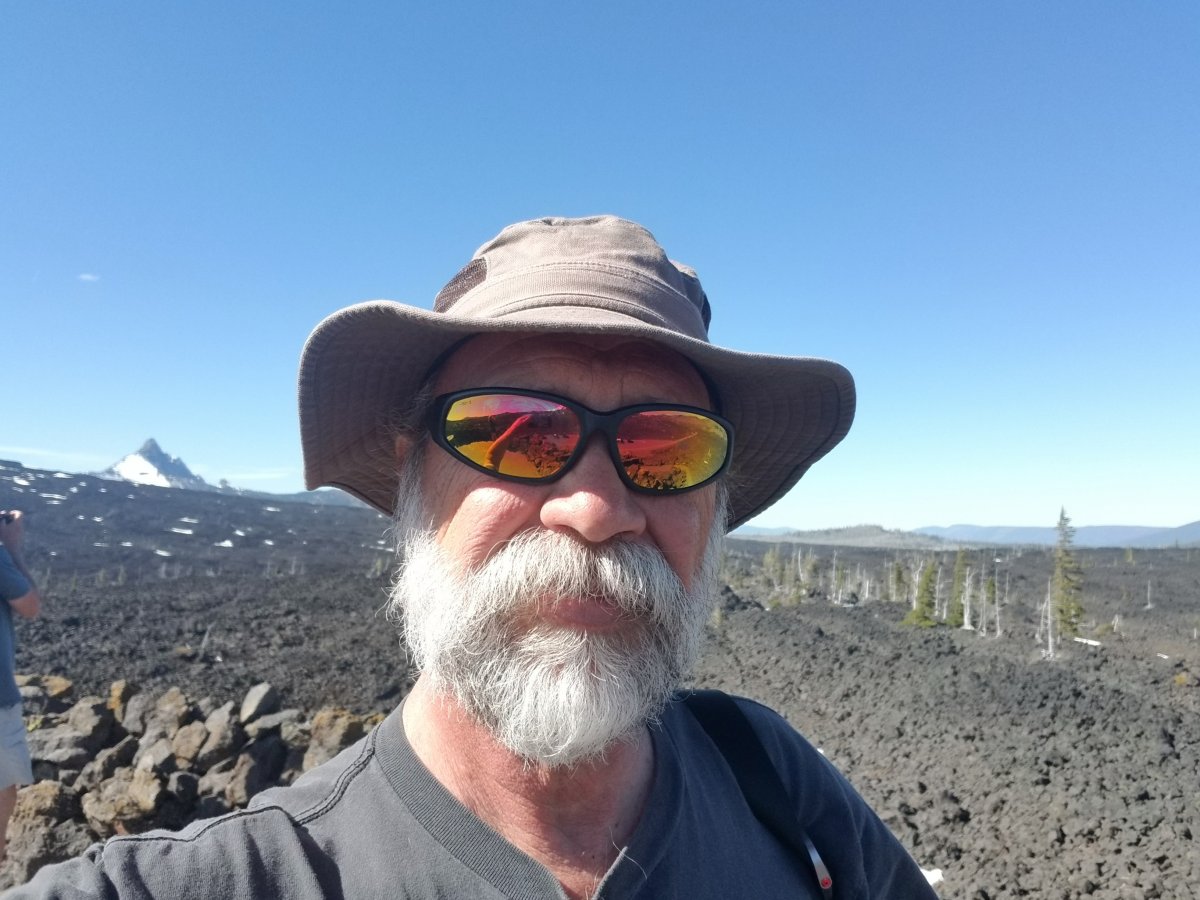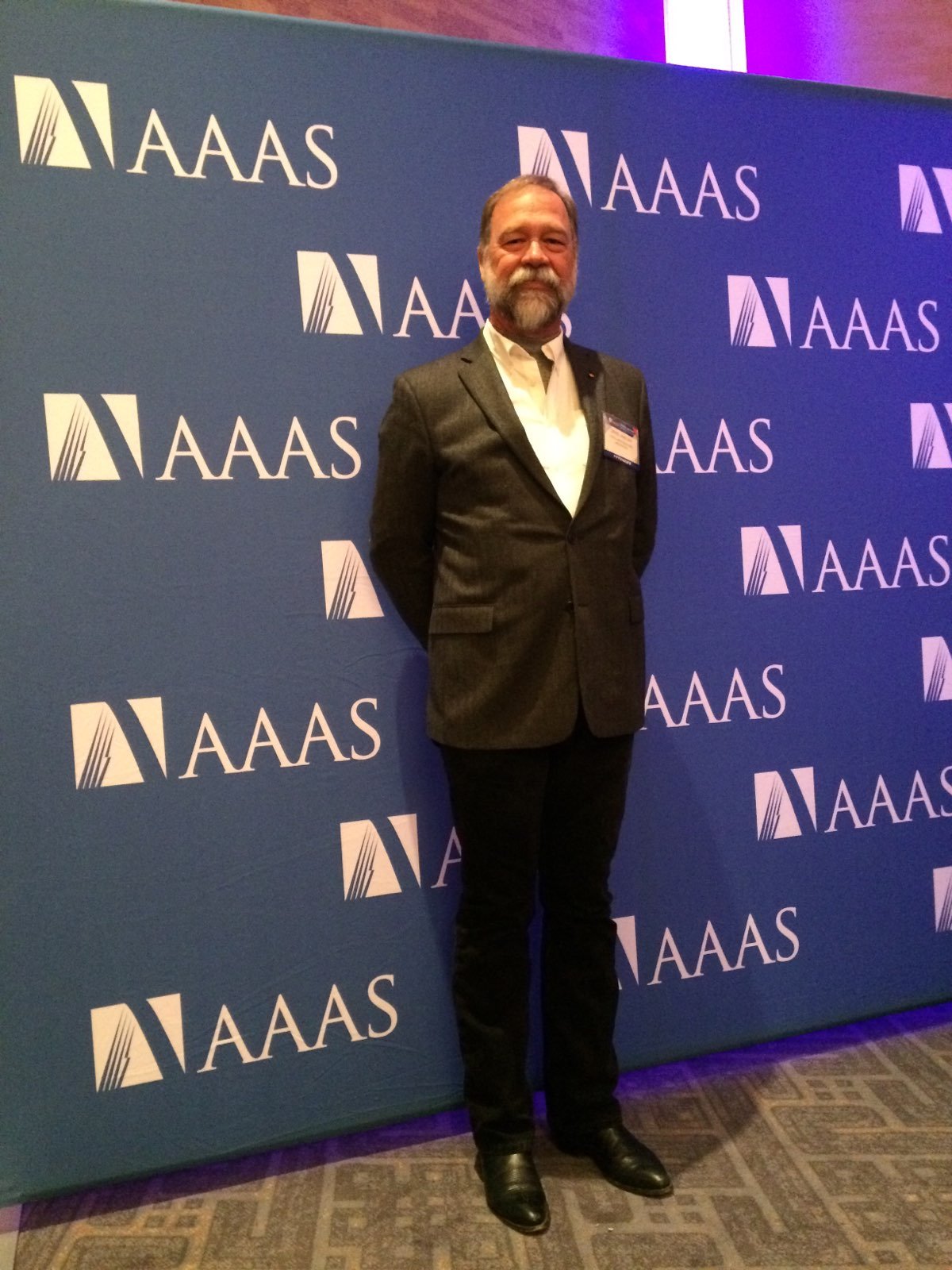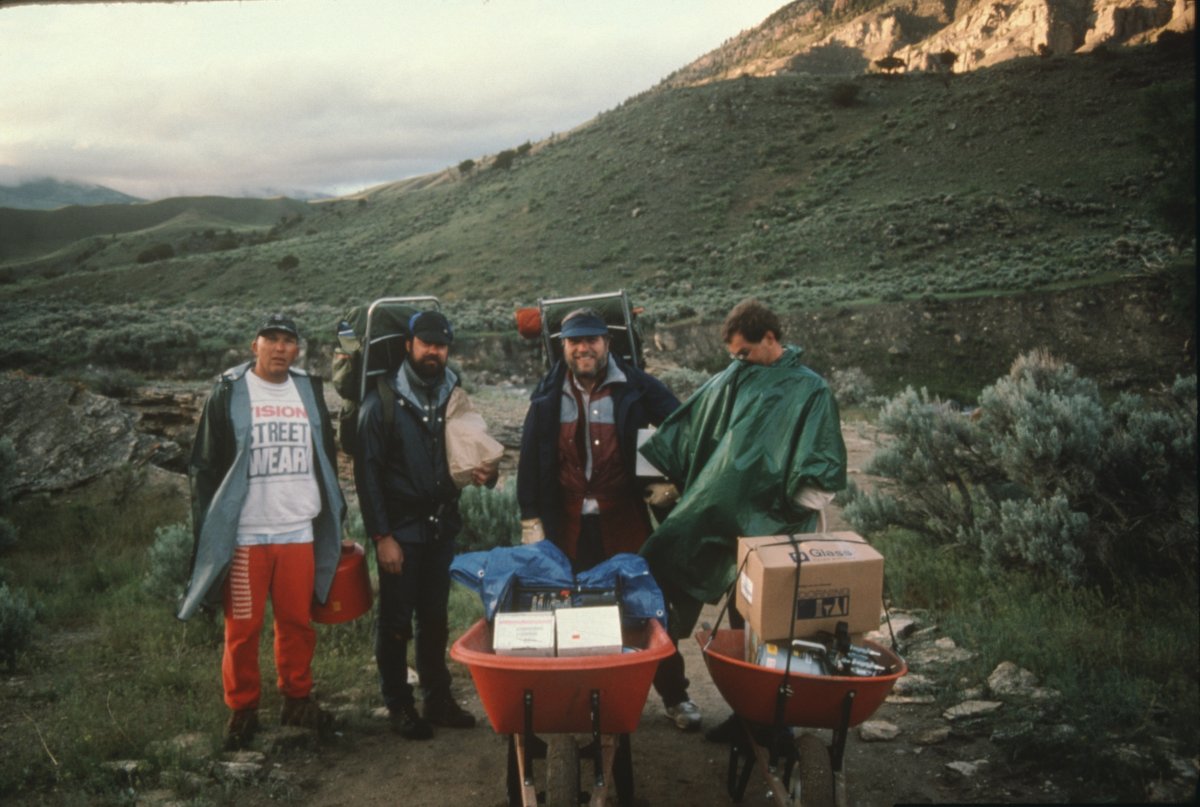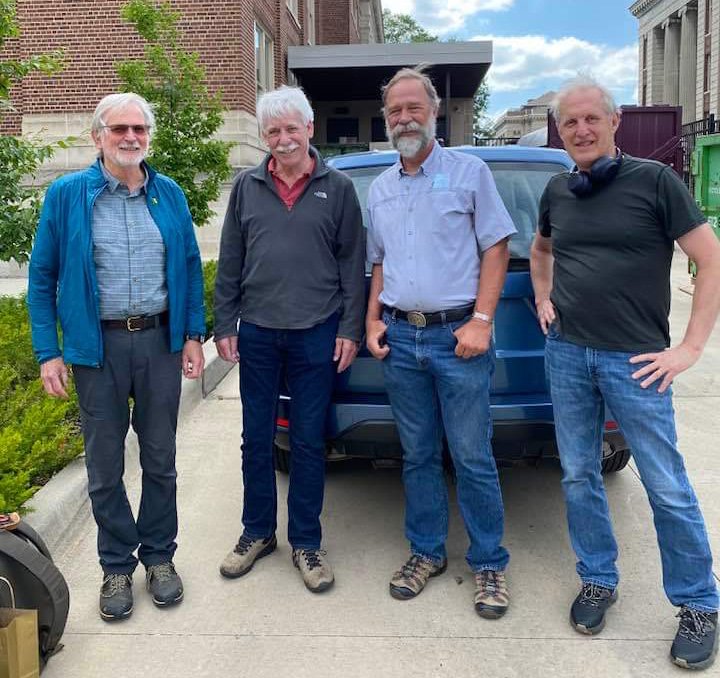From Ocean Depths to Deserts

-Written by Kaleigh Swift

Alumni of the Earth & Environmental Sciences department often go on to work in a number of exciting fields, some more closely related to the Geosciences than others. We are incredibly proud of all of our alumni, and we want to take every opportunity to highlight the various lives and careers they go on to have after their time in Minnesota. In this e-newsletter, we feature the career of David Janecky who, in 1982, graduated with a Ph.D. from our department.
David Janecky was born in Colorado and was raised in the central valley of California by two midwestern parents who met working in Yellowstone National Park. Despite his midwestern roots, Janecky considers himself a westerner through and through. He attended University of California, Berkeley for undergrad and spent his junior year studying abroad in Bergen, western Norway, where he formed a working relationship with a professor from UC Santa Barbara. He would later apply for a graduate program at UC Santa Barbara to complete the projects he started with this professor. Once finished, he was able to transfer to Stanford to continue his graduate education. While at Stanford, he met and started working with a postdoc who may be familiar to those in Earth & Environmental Sciences: Dr. Bill Seyfried.
“I always claimed somewhat untruthfully that in Minnesota I always lived on the west side of the Mississippi, because I couldn't be an Easterner. Of course the department is on the east side and most of the places I lived were within walking distance of the Mississippi, but not west of it.” -David Janecky
It was early on in Janecky’s time at Stanford that Seyfried received a tenure-track offer at the University of Minnesota, where he was tasked with setting up an Aqueous Geochemistry Lab. Senior grad student, Bernard De Jong, had some advice to share with them both. Janecky recalls the moment, “It was a classic statement. He sat on one of the corners of the desk in the office that we all shared. He was puffing on his pipe and said ‘both of you are dumb’ to Bill and I. Stanford was having some issues, and I already knew how to build and run a lab, and so he was saying it was beneficial to both of us for Bill to take me with him. So in February 1978, I drove from sunny California to cold Minnesota. Quite a change.” Janecky finished his Ph.D. at the University of Minnesota in 1982, then stayed on as a postdoc working with Seyfried.
When Janecky came to Minnesota, the work in Seyfried’s lab was primarily focused on seafloor hydrothermal systems. They were doing preliminary inquiries on the rock components from the mantle. Janecky’s thesis was on the experimental serpentinization of mantle rocks. “At that time we expected people to discover hydrothermal vents from those rocks any day. It, in some ways, felt like a race…As it turns out those hot springs weren't discovered on the mid Atlantic Ridge until almost 20 years after my PhD…So it's an example for me of how science works sort of nonlinearly, and you never really know when things are going to connect,” Janecky observes.
After spending several years in Minnesota, Janecky received an offer for another postdoc position at Los Alamos National Laboratory in New Mexico. “I fully intended that to be a transition phase, and that I was going to spend a year or three doing fun research and then go off and be a professor,” Janecky recalls. However, when the offer for a professorship finally came in, Los Alamos also offered a position. After weighing out his options, Janecky decided to stay.
“I decided I sort of like what I'm doing here, and it's fun. It's an interesting thing that I hadn't anticipated, and so, as I describe it, I became a ‘lifer’ and spent almost 35 years at Los Alamos National Laboratory before I retired.” -David Janecky

Throughout his 35 year career at Los Alamos, Janecky would work with, and lead, a number of different teams and projects. During the first 10 years of his tenure he was doing his own research for part of the time, while being on call to assist with isotope and nuclear chemistry projects. Janecky explains “The reason that they had a few geoscientists and hired me into that group was because when you blow up an atomic explosive underground, it's basically a geologic scale event. It melts a lot of rock.” With the Actinide Migration Advisory team he analyzed what the geological effects were of nuclear materials processing and production, how those chemicals moved through systems, any problems they created, and where chemicals needed to be cleaned up. The team worked closely with reps from the Department of Energy, the state, environmental groups, the public, and the contractor. “It was an interesting balancing act. I learned a lot about communications…We were hired to answer hard questions, and to make sure that they got good information,” Janecky says.

Around the same time, a large fire came through Los Alamos. Janecky was able to deploy his geoscience knowledge to assist in writing field safety procedures, explaining how to identify hazardous field conditions created by the fire. The experience he gained in safety and quality assurance also led to him being a part of a team whose purpose was to certify waste as being safe for transport to the Waste Isolation Pilot Project. This involved non-destructive analysis of waste drums using methods like x-ray, neutron scanning, and acoustic imaging to make sure they didn’t contain anything they weren’t supposed to (like liquids), and to verify that what was contained was done so safely. He was then named head of the Non-Destructive Testing & Evaluation Group at Los Alamos. A major responsibility of that role was looking at subcritical nuclear testing components. “When you put those complicated experiments together one of the things you want to look at at the end is ‘Does it all fit?’ or ‘Does it have any cracks in it?’ All the same sorts of things they did with geoscience except interesting problems with the human built piece,” he says.
Janecky then moved from the non-destructive evaluation group to stockpile surveillance. While on that team he was tasked with leading projects focused on maintenance of nuclear weaponry. “I worked with the people who actually took apart the old nuclear weapons to make sure that they're still within specifications and still operational,” he explains. This brought up an interesting internal conversation for Janecky. “I know that nuclear weapons exist. I've seen them. I felt them. For me, that was an interesting question that I had to deal with as a National Laboratory scientist. ‘Was I willing to be involved in this sort of stuff?’ ‘What did I think personally about it?’ I'm comfortable now with saying that some of us who aren't proponents don't have our blinders on… We are looking over the shoulders of the people who are working on these things and designing them… I had looked carefully at that, and was comfortable saying that,” Janecky states.
Over the course of his career, Janecky also found himself getting significantly involved in mentorship. He is currently working with students through the CSE Mentorship Program at the University of Minnesota, AGU’s Mentoring 365 program, and New Mexico’s Supercomputing Challenge. Through Mentoring 365, he is currently working with a sedimentologist in Nigeria. “That stretches my mind a bit. To be working with somebody on the other side of the world, and also in a totally different cultural situation. He's looking to go to graduate school, and so I've been advising him on how to think about that,” Janecky says. He also takes the time to meet with early career scientists at Los Alamos over coffee, to discuss their work and professional goals. “Mentoring has become a big thing that I do. That's sort of my equivalent of being a professor. There's been a little bit of that, I mean, even though I didn't become a professor full time,” he explains.

Being retired has not slowed Janecky down. He elaborates, “I'm still having fun as a scientist. Now they're paying me to do what I want to do. I have a good pension that gives me the ability to not have to worry about those sorts of things and not have somebody else telling me what to do. I'm just doing what I want to do now, which is fun.” He is continuing to pursue his own research interests, and maintains access to Los Alamos National Laboratory. “There are a bunch of things on my shelves and in boxes in my office here at home, that I want to get back to and look at once again in terms of doing some publications. Those sorts of things are fun because some of them are close to 40 years of data. And so again, like my Ph.D. thesis, the time comes around to when all of a sudden that research has new impact and new interest and new people to collaborate with,” he comments.
“Looking back, it's been a really fun dynamic, interesting career, with lots of twists and turns.” -David Janecky

Janecky enjoys a number of pastimes outside of his research life. He spends a lot of his free time helping his wife manage the finances of her successful gymnastics business. In addition to spending time helping his wife, he enjoys traveling with his friends. He has also purchased a Mercedes Benz van that he is in the process of renovating. He explains, “I've been building that into what I call my Covid bubble…That's sort of been the equivalent of building a lab like Bill has. It's a lot to put it together. The first 2 parts go together perfectly, but then the third part doesn't quite fit. So you have to make that go, and by the time you get to the fourth one, you're really inventing things and changing your plans as you go. So that's been fun, too, figuring out how to put that together.” His van has already taken him to some cool places. “I've become a little bit of a curmudgeon about the fake scenes in the background of Zoom calls. Instead of that, I ran one Zoom meeting where I was on a beach in Oregon, and I had the real beach behind me… I was once working on a college campus up in Montana and in the Tetons. I ran a Zoom with the Tetons as a background. If it's not my book shelves in the background, then you know it's gonna be a real picture somewhere that I'm at in my Zoom,” he says. Janecky plans to keep traveling in his van, building it to be a fully functional home away from home, complete with a kitchen, living space, and a home office and wifi so he can take his research and writing with him to all the beautiful places of the country.
The Department thanks David Janecky for taking the time to speak with us about his storied geoscience career!